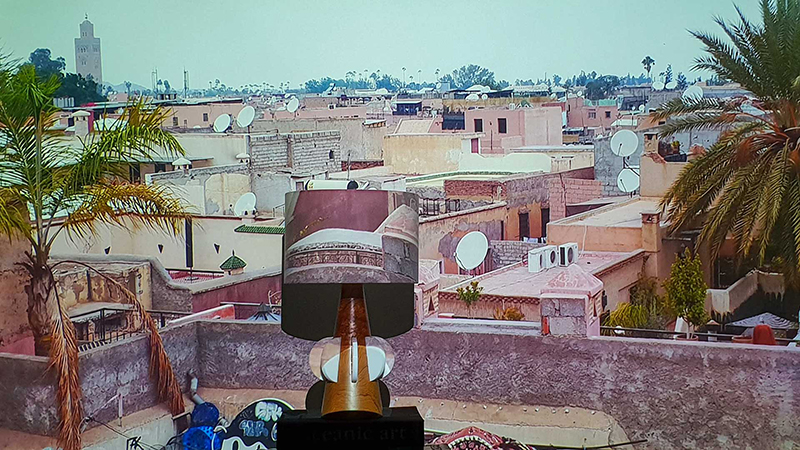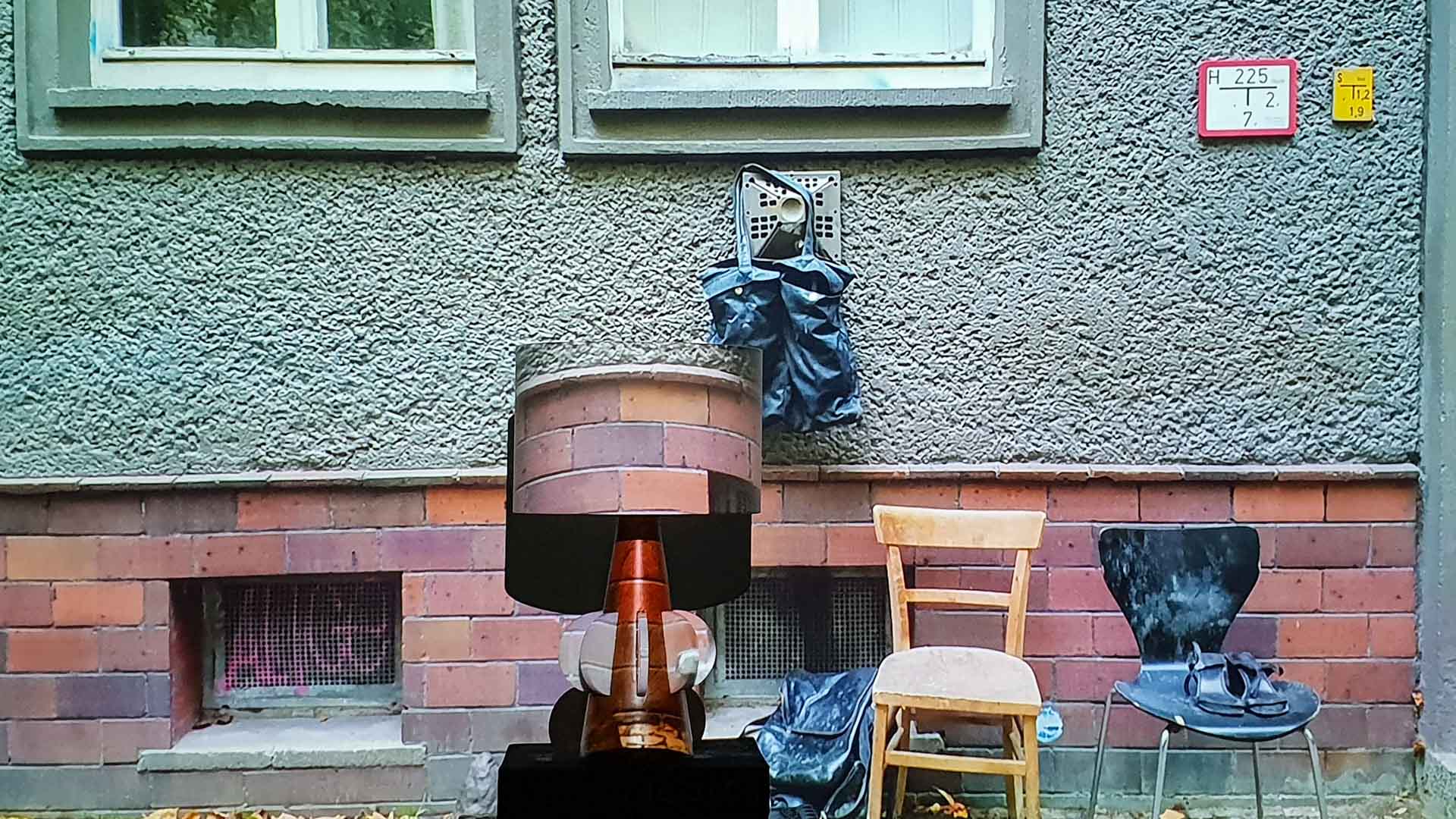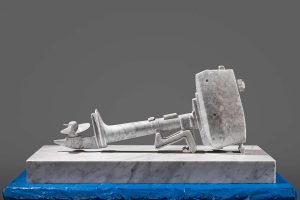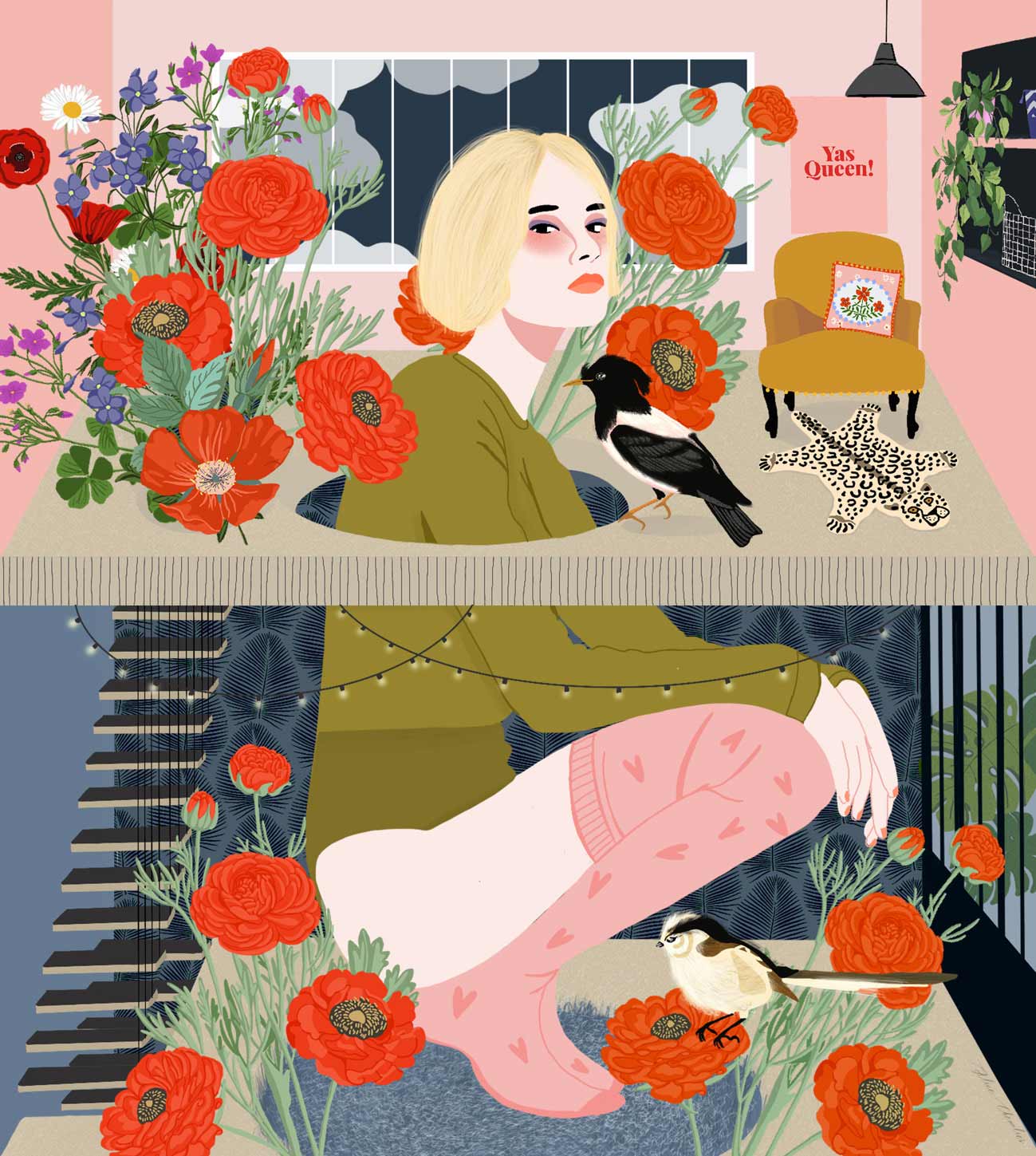Something beautifully incongruous about looking back, way back instead of ahead; deliberately challenging the definition of inspiration for the digital age. Anandita Shah talks about the collaboration behind 500 B.C, a brand inspired by the rise in collective consciousness and thinkers around the globe during the epoch age 500 BC, in an interview with Sonalee Tomar.

Exploring new paths and crossing boundaries into new dimensions, is at the core of our work. The pursuit of something no one has ever done before is endless, everything that can be imagined can be made. What is imagination, other than the ability to dream up alternate realities?
Anandita Shah 500bc

Take us to the beginning of your story.
Shiraz and I met through friends. We encountered each other at a pivotal stage in both our lives. We were both contemplating new paths and our journeys coalesced and brought us to where we are now. The lamps were a fun experiment, for the home that we share together. It all started with the ‘Totem’ lamp. One thing led to another and we found ourselves setting up a studio in Mumbai, to conjure up objects and lighting that excite us.
Tell us about the journey of 500 B.C. What were the pivotal moments?
500 B.C. was the label under which I designed handbags for a long time. The name endured, but the products changed, and may change yet again. A probable mutation rather than an evolution.
Naturally we have had an array of hiccups along the way, primarily in terms of the production process and finishing; all of which are an innate part of learning.

How do you divide your roles? How do you find balance?
Shiraz is the backbone of the studio. My axis mundi. Without him, I am a lamp without a light. We are driven and seriously immersed in the creation of (what we consider) beautiful objects. Shiraz is constantly focused on the perfection of each design and wants each design to be the best version of itself. Our roles diverge, overlap and work in tandem, throughout the day.
Whereas I am primarily involved in the design inspiration, Shiraz helps translate my ideas into a 3D CAD model, which we use to more clearly define dimensions and how components of the lamp will come together. The 3D model also enables us to play around with colours, textures and get a real feel to how the finished product will be. We are involved in each and every step of the process. The challenge of understanding by getting actively involved in the various processes has not only helped us grow as individuals, but has also helped us refine it and push the boundaries.

How do you deal with the conceptual difficulty and uncertainty of setting out to create something that no one else has aspired to?
This is what excites us. These are the challenges that drive our work. Exploring new paths and crossing boundaries into new dimensions, is at the core of our work. The pursuit of something no one has ever done before is endless, everything that can be imagined can be made. What is imagination, other than the ability to dream up alternate realities?

What inspires you?
I’m motivated by the objects that will be created and the ability to express myself in the designs. The curves of pillars in ancient ruins, the blurred photographs of Sugimoto, the abstraction of Malevich’s works and the depth of India inspire me. I see the design process as a reinvention of forms, colours and textures, by crystalizing mythologies and sculpting philosophies. Weaving in and out of spaces and thought processes adds an almost bipolar flavour to the work. Also playing with concepts like balance and asymmetry are exciting.
Someone who has obviously influenced our current collection is Ettore Sottsass and the Memphis group. I think his approach of transmuting ancient philosophies and cultures into contemporary design, as well as his playfulness and radical approach have impacted our work. I think his Ashoka lamp is exemplary. I also look up to the work of modernists like Oscar Niemeyer, Luis Barragan, Mies Van der Rohe and Alvar Aalto, including Marcel Breuer, Eileen Gray and Charlotte Perriand. The list can go on.
We try not to place boundaries that define the type or style of work we create, but it appears that what we have created is slowly and unconsciously taking on a particular style from all that inspires us.

How does your audience interact and react to the unexpected vis a vis the work you put out into the world?
We are still too young a studio to understand how the audience perceives our work. We can only hope that they love owning and using the lamps as much as we do.
How often are you are on the other side, as a part of the audience? What are you looking for in others’ work? Who are your maestros? Whose journey would you want to read about?
Constantly on both sides, switching roles, when required. I look to be surprised by things, be it films, art or design, that make me feel, think and change.

What is one imperative piece of advice you would give to someone who is just starting out?
I’m not sure what to say, as I don’t think we have achieved success. We are only just starting out ourselves. I think what’s always important is to try new things, persevere and create objects that make you happy.
How would you feel about commissions?
We are open to it, as long as we stay sincere and true and create objects that make us happy
Way forward. What are you working on now? What’s coming next?
We are focused on deepening our understanding of the materials we already use, to further strengthen our designs and our craft. Learn more about colours, processes, technical components, and how we can best manipulate them to realise our designs.
Before you go – you might like to browse our Artist Interviews. Interviews of artists and outliers on how to be an artist. Contemporary artists on the source of their creative inspiration.












Add Comment